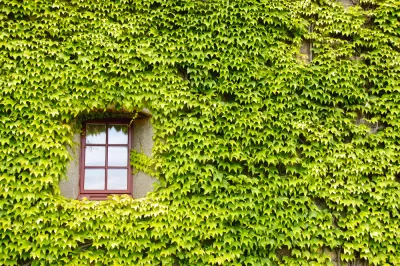Greening the city extends our life and increases our quality of life.

"As much as I love my winter city, when spring rolls around life brightens up. The onslaught of studies from Friday’s Earth Day imply that our feel-good response to the fresh lime green of spring does much more than pump endorphins. How we green our cities may be a life and death issue. People with greenery close to home have significantly lower mortality rates, according to new analysis of the extensive Nurses’ Health Study."
"If you’re a frequent PlaceShakers reader, you’ve heard us tout biophilia – or the love of living systems – particularly where nature has been integrated into urbanism. We’ve looked at how land use and transportation choice impact the earth. We’ve blogged about compact development patterns as a tool for rural preservation. We’ve explored the rapid change for the Inuit living on the land, where they’ve gone “from igloos to internet” in 40 years, gleaning insights from these resilient people on our changing global landscape. And on Huffington Post, PlaceMakers’ Kaid Benfield is an advocate for the landscape, weaving preservation into development policy and nature into neighbourhoods."
Hazel Borys updates these lines of thought with the latest on the measures quantifying why it all matters.

FULL STORY: Green Cities: Breathe deep and walk freely

Study: Maui’s Plan to Convert Vacation Rentals to Long-Term Housing Could Cause Nearly $1 Billion Economic Loss
The plan would reduce visitor accommodation by 25,% resulting in 1,900 jobs lost.

North Texas Transit Leaders Tout Benefits of TOD for Growing Region
At a summit focused on transit-oriented development, policymakers discussed how North Texas’ expanded light rail system can serve as a tool for economic growth.

Why Should We Subsidize Public Transportation?
Many public transit agencies face financial stress due to rising costs, declining fare revenue, and declining subsidies. Transit advocates must provide a strong business case for increasing public transit funding.

How to Make US Trains Faster
Changes to boarding platforms and a switch to electric trains could improve U.S. passenger rail service without the added cost of high-speed rail.

Columbia’s Revitalized ‘Loop’ Is a Hub for Local Entrepreneurs
A focus on small businesses is helping a commercial corridor in Columbia, Missouri thrive.

Invasive Insect Threatens Minnesota’s Ash Forests
The Emerald Ash Borer is a rapidly spreading invasive pest threatening Minnesota’s ash trees, and homeowners are encouraged to plant diverse replacement species, avoid moving ash firewood, and monitor for signs of infestation.
Urban Design for Planners 1: Software Tools
This six-course series explores essential urban design concepts using open source software and equips planners with the tools they need to participate fully in the urban design process.
Planning for Universal Design
Learn the tools for implementing Universal Design in planning regulations.
City of Santa Clarita
Ascent Environmental
Institute for Housing and Urban Development Studies (IHS)
City of Grandview
Harvard GSD Executive Education
Toledo-Lucas County Plan Commissions
Salt Lake City
NYU Wagner Graduate School of Public Service


























